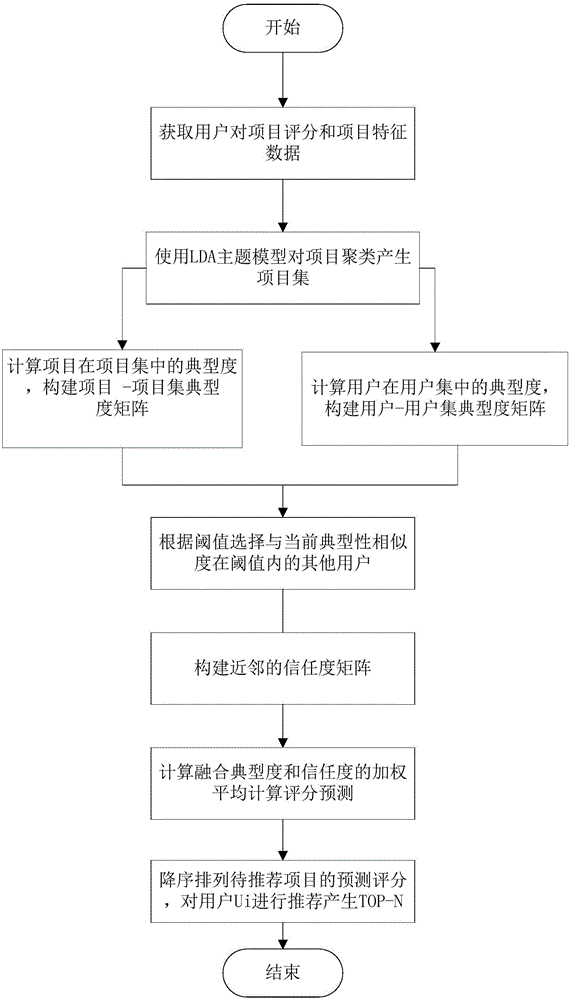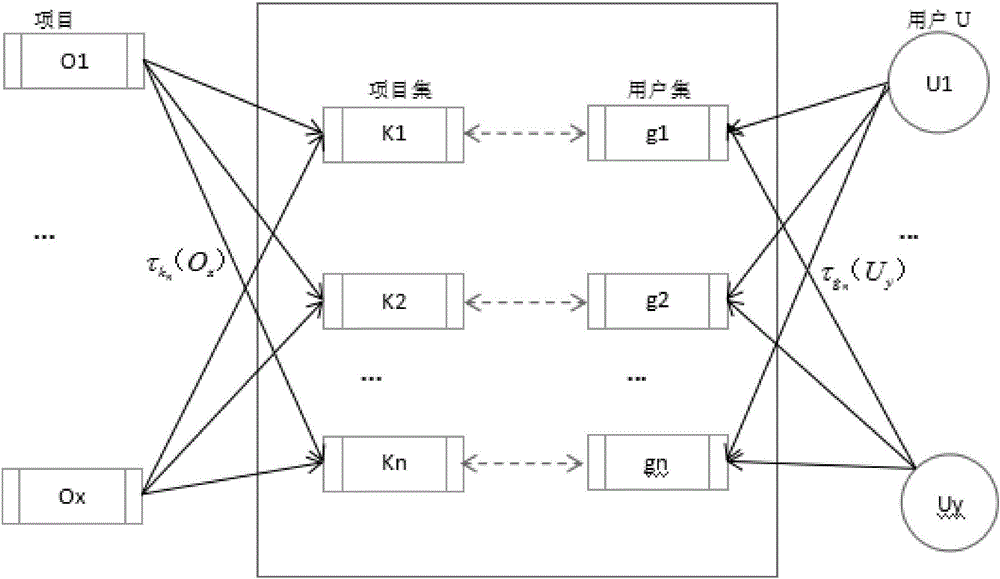Collaborative filtering recommendation method based on typicality and trusted network
A collaborative filtering recommendation and typicality technology, applied in special data processing applications, instruments, electrical digital data processing, etc., can solve problems such as inability to recommend, less historical user rating data, and difficult similarity calculations
- Summary
- Abstract
- Description
- Claims
- Application Information
AI Technical Summary
Problems solved by technology
Method used
Image
Examples
Embodiment 1
[0080] Such as figure 1 As shown, a collaborative filtering recommendation method based on typicality and trust network includes the following steps:
[0081] Step 1: Traverse all users in the current network system to obtain user and historical rating data, project and user characteristic information.
[0082] Step 2: Preprocessing data: express the content label of each item in the form of feature text vector, set the number of hidden topics K, and use the LDA topic model to cluster the items to generate item set topic distribution θ and topic-word distribution Φ , where the itemset consists of items O i A collection of represents:
[0083]
[0084] Where m represents the number of items, O represents the item, and w i,m Indicates how typical the item is in the program set.
[0085] Through topic model clustering, the word vector (cluster center feature vector) in the topic obtained is composed of item set attributes and values, expressed as follows:
[0086]
[0...
PUM
 Login to View More
Login to View More Abstract
Description
Claims
Application Information
 Login to View More
Login to View More - R&D
- Intellectual Property
- Life Sciences
- Materials
- Tech Scout
- Unparalleled Data Quality
- Higher Quality Content
- 60% Fewer Hallucinations
Browse by: Latest US Patents, China's latest patents, Technical Efficacy Thesaurus, Application Domain, Technology Topic, Popular Technical Reports.
© 2025 PatSnap. All rights reserved.Legal|Privacy policy|Modern Slavery Act Transparency Statement|Sitemap|About US| Contact US: help@patsnap.com



